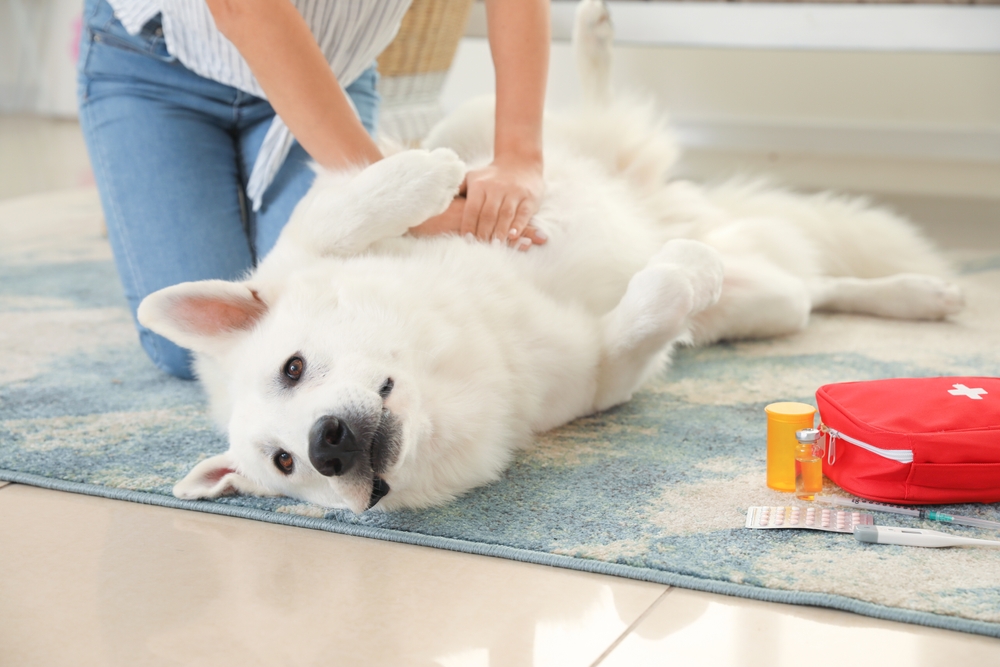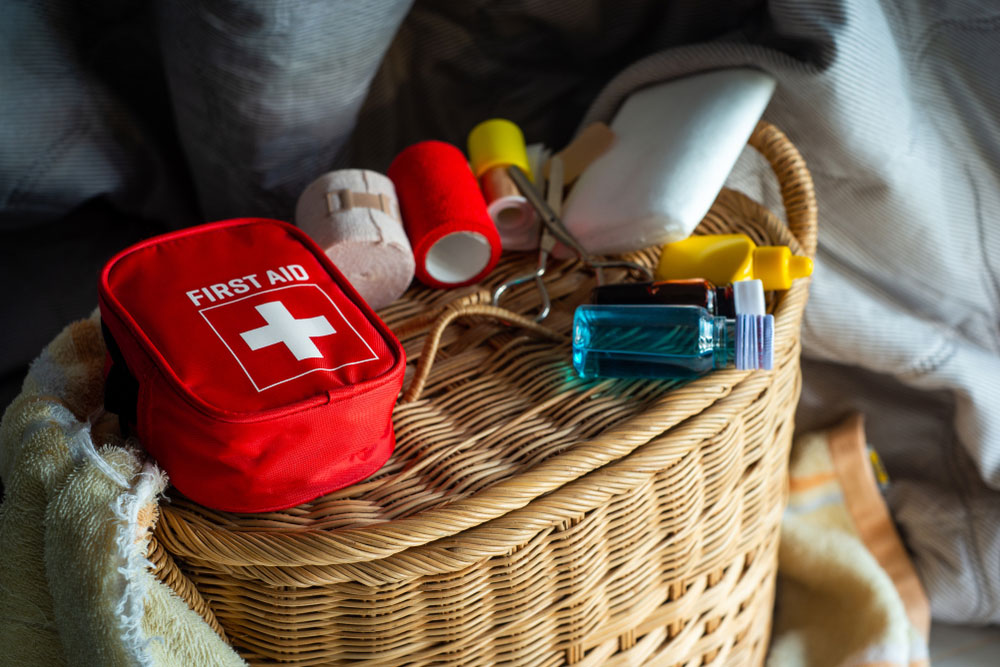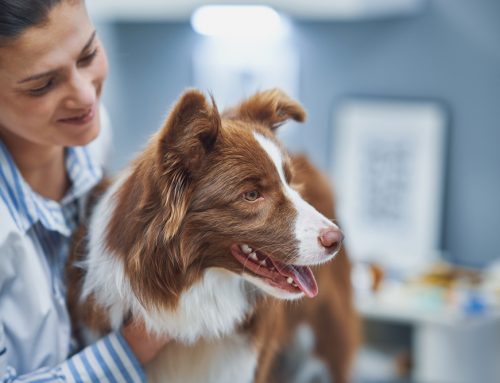From First Aid Kits to Action Plans: How to Be Ready for Pet Emergencies
No one wants to picture an emergency with their pet, but reality often has other plans. One moment your cat is lounging by the window or your dog is playing in the yard, and the next, they are struggling to breathe or have eaten something they shouldn’t. These moments are stressful and can feel overwhelming, but the right preparation helps you respond with clarity and confidence.
At Omega Veterinary Group, supporting pet owners through unexpected situations is a priority. This guide breaks down what counts as an emergency, how to plan ahead, and what steps make all the difference when the unexpected happens.
What Counts as a Pet Emergency?
Not every bump or scratch is life-threatening, but some conditions require immediate veterinary care. A true emergency is any situation that can cause severe harm or death if left untreated. Knowing what to look for helps you act before a small issue becomes critical.
Examples of urgent pet emergencies include:
- Severe trauma: Being hit by a car, falling from a significant height, or deep bite wounds.
- Poisoning: Ingesting toxic foods like chocolate or grapes, antifreeze, household medications, or poisonous plants.
- Breathing difficulties: Labored breathing, blue gums, or loud wheezing. Learn more about Respiratory Distress in Pets.
- Seizures: Especially if they last more than a few minutes or occur in clusters.
- Sudden collapse or unresponsiveness: This can be linked to cardiac issues, severe shock, or toxin exposure.
If you are ever unsure, just come in. You can also consult Help! Is This a Pet Emergency? or reach out to Omega Veterinary Group.
Why Preparedness Matters
Emergencies can unfold quickly and unpredictably. Having an emergency plan means you can act with confidence rather than panic.
Being prepared means:
- Acting faster, which can make a difference in recovery outcomes.
- Keeping your pet calm because they sense your energy.
- Avoiding delays that can cause complications.
- Saving time by knowing exactly where to go and what to bring.
A prepared pet owner feels more in control and less likely to make decisions based on fear.
Warning Signs: What to Watch For
Your pet cannot tell you when something is wrong, so being alert to subtle signs is essential. Here are common early warning symptoms:
| Sign | What It Might Mean |
| Excessive drooling | Possible toxin ingestion, nausea |
| Vomiting and diarrhea | Internal blockages, toxins, or infections |
| Struggling to urinate | Blockage, especially in male cats |
| Weakness or pale gums | Shock, internal bleeding, or anemia |
| Rapid or shallow breathing | Respiratory or cardiac emergency |
What to Pack in a Pet Emergency Kit
An organized emergency kit saves precious time when every minute counts. Keep these supplies in a waterproof container and store it in an easy-to-reach spot.
Pet Emergency Kit Checklist:
- Gauze pads, bandages, adhesive tape
- Antiseptic wipes and gloves
- Digital thermometer and lubricant
- Muzzle or soft towel for restraint
- Copies of medical records and microchip info
- Extra leash, collar, and collapsible water dish
- Medications, if prescribed
- Emergency vet and Poison Control numbers
Refer to Pet First Aid – Tufts University for extra guidance.
How to Build an Emergency Action Plan
Emergencies are unpredictable, but your response should not be. A clear plan ensures everyone in your household knows what to do.
- Identify local emergency vets: Save contact info for 24-hour clinics.
- Know your route: Map the fastest way to the clinic, considering traffic.
- Assign roles: If multiple family members are involved, decide who calls ahead, who gathers supplies, and who drives.
- Prepare for evacuations: Use a sturdy carrier or leash and keep it accessible.
Practice a quick “grab-and-go” drill every few months to keep the plan fresh.
Learn Life-Saving Basics
While emergencies should always be treated by professionals, basic first aid can help stabilize your pet during transport.
Key skills include:
- Pet CPR: Knowing how to perform CPR can sustain your pet until they reach care. Review Cornell’s CPR guide.
- Heimlich maneuver: Pets can choke on food, toys, or bones. Learn how to perform the dog Heimlich.
- Vital signs monitoring: Recognize normal pulse and breathing rates. Being familiar with your pet’s baseline helps spot trouble early..
Prevention: The Best Defense
Emergency preparedness includes proactive steps to prevent accidents in the first place.
Prevention strategies:
- Keep toxic foods, medications, and chemicals securely stored.
- Take a certified pet first aid class for hands-on experience.
- Know which houseplants are unsafe for pets.
- Use collars with ID tags and microchips for easy identification if your pet gets lost.
- Keep up with wellness visits and parasite prevention to catch health problems early. Explore Omega Veterinary Group’s services.
- Supervise outdoor playtime and be cautious during extreme weather.
Read more about how to reduce risks in Preventing Pet Emergencies.

FAQs: Pet Emergencies
How do I know if this is really an emergency? Trust your instincts. If your pet’s condition seems sudden, severe, or unusual, call your vet or check Help! Is This a Pet Emergency?.
Should I give my pet human medicine? No. Many human medications are toxic to pets. Always check with your vet first.
What if my pet eats something toxic? Contact ASPCA Poison Control immediately and save the packaging if possible.
Can emergencies be prevented? Many can. Proper training, home safety measures, and routine vet visits all reduce risks.
Be Ready. We’re Here to Help.
Emergencies are unpredictable, but having a plan makes them manageable. At Omega Veterinary Group, we believe preparation and partnership give pet owners the tools to act fast and stay calm.
Worried about how an emergency might affect your pet? Reach out and we’ll walk you through the next steps—contact us today. Staying informed today means peace of mind tomorrow, and we’re here to help every step of the way.






Leave A Comment